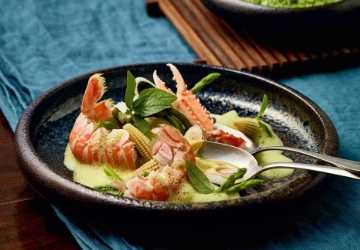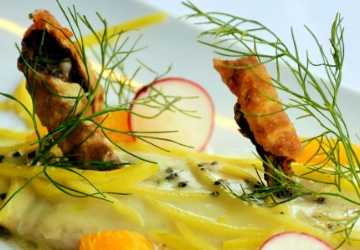How to Find the Perfect Harmony in Multicultural Fusion Cuisine
Fusion cuisine is an avant-garde culinary trend that combines elements of different culinary traditions to create unique and delicious dishes. However, achieving the perfect balance in multicultural fusion cuisine can be difficult. In this article, we explain key strategies for creating harmonious and delicious fusion dishes, ensuring that each ingredient complements the other without overpowering the taste buds.
Understanding Multicultural Fusion Cuisine
Fusion cuisine embodies the art of combining flavors, techniques, and ingredients from different cultures. It requires a deep understanding of the respective culinary traditions and a keen palate. Here are some basic tips to help you achieve balanced fusion cuisine:
1. Research and Respect Cultural Traditions
- Start by carefully researching the culinary traditions of the cultures you want to unite. Learn about the basic ingredients, cooking methods, and flavor profiles.
- Respect the authenticity of each dish. Balanced fusion cuisine is about highlighting flavors, not suppressing them.
2. Identify Complementary Flavors
- Choose flavors that harmonize with each other. For example, the rich, spicy flavors of Indian cuisine harmonize well with the green freshness of Thai herbs.
- Avoid mixing an excessive amount of strong flavors. The goal is to create a harmonious combination that highlights the best of each culture.

3. Balance Ingredients and Techniques
- Use ingredients in a way that respects their cultural origins. For example, you might add soy sauce to a marinade for a Mexican-style dish.
- Experiment with cooking techniques. You might grill vegetables in a Mediterranean style but use Asian spices to season them.
4. Maintain Balance
- Make sure no single ingredient or flavor dominates the dish. Balance is key when creating delicious multicultural fusion recipes.
- Pay attention to the ratio of ingredients. Even the portion sizes help keep the dish harmonious.
5. Investigate and Perfect
- Experiment again and again when preparing a dish. Adjust seasonings and ingredients to find the perfect balance.
- Get feedback from others. Sometimes an outside perspective can help identify imbalances in fusion cuisine.
Creating Fusion Dishes
Creating fusion dishes is an art that requires creativity and precision. Here are some pragmatic steps to help you create sophisticated and balanced multicultural fusion recipes:
1. Start Simple
- Start with a familiar recipe and incorporate a variation from another culture. For example, you could make Korean barbecue-flavored tacos.
- Simplicity allows you to focus on achieving the perfect balance without overwhelming yourself.
2. Use Fresh, High-Quality Ingredients
- The quality of your ingredients will significantly impact the finished dish. Fresh, high-quality ingredients enhance flavors and make it easier to achieve a harmonious blend.
- Consider using seasonal ingredients to add freshness and variety to your fusion dishes.
3. Experiment with Spices and Herbs
- Spices and herbs are essential to the balance of fusion cuisine. Try different combinations to find what works best.
- Pay attention to the concentration of your spices. Start with a moderate amount and then adjust to taste.
4. Incorporate Texture Contrast
- Texture plays an important role in the overall dining experience. Incorporate different textures to make your dish more interesting and enjoyable.
- For example, you can incorporate crunchy ingredients into a creamy dish or mix soft and crunchy ingredients together.
5. Presentation is Everything
- When preparing fusion dishes, presentation can enhance the dining experience. Use colorful ingredients and carefully arrange them on the plate.
- Garnish with herbs or edible flowers to add a touch of elegance and freshness. Examples of Successful Fusion Dishes
To inspire you further, here are some examples of successful multicultural fusion recipes for creating fusion dishes:
1. Sushi Burrito
- Combining the concepts of sushi and burrito, this dish consists of sushi rice, fresh fish, and vegetables embedded in a layer of seaweed, similar to a burrito.
2. Korean Tacos
- A fusion of Korean BBQ and Mexican tacos, this dish includes marinated beef, kimchi, and traditional taco toppings like cilantro and lime.
3. Indian Spiced Pizza
- This fusion dish uses traditional pizza dough and is topped with Indian-style toppings like tandoori chicken, paneer, and chutney.
Advanced Techniques for Achieving Balance in Fusion Cuisine
1. Experiment with Acidity and Bitterness
- Acidic ingredients like acetic acid, lemon extract, and tamarind can accentuate flavors and provide a refreshing dichotomy in multicultural fusion recipes.
- Introduce subtle bitterness through ingredients like chicory or cocoa beans to create depth and complexity.
2. Leverage Fermentation
- Use fermented ingredients like kimchi, sauerkraut or miso to add umami and enhance the overall flavor.
- Fermentation not only brings out the deep flavors but also increases the nutritional value of the dish.

3. Add Flavors
- Use rich flavors like scallions, ginger, lemongrass and herbs like basil and cilantro to create a multi-dimensional taste experience.
- Flavors should be carefully balanced so as not to overpower the main flavor of the dish.
4. Explore Unconventional Combinations
- Try unconventional combinations like: B. Fusing cacao with savory elements or incorporating exotic stone fruits into traditional dishes.
- These combinations can surprise the taste buds and improve the balance of fusion dishes.
5. Use Different Cooking Techniques
- Combine cooking techniques like baking, steaming, grilling and sautéing to create different textures and enhance flavors.
- Techniques like sous vide can provide precise temperature regulation to cook impeccable fusion dishes.
Promote Cultural Synergy
1. Research Deeply
- Immerse yourself in the culture you are merging with by taking cooking classes, reading cookbooks, and experiencing authentic cuisine firsthand.
- Understanding the cultural background can enrich your ability to create authentic and respected fusion dishes.
2. Collaborate with Chefs
- Collaborate with chefs from different cultural backgrounds to gain insights and techniques to improve the balance of fusion cuisine.
- Working together can ultimately create innovative dishes that reflect a true fusion of culinary traditions.
3. Attend Food Festivals
- Attend food festivals and cooking events to discover new ingredients, techniques, and flavor combinations.
- Festivals provide a platform to learn about different cuisines and gather inspiration for your fusion creations.
4. Learn from Traditional Healers
- Explore the use of traditional herbs and spices in cultural medicine to add health benefits to your fusion dishes.
- Ingredients such as turmeric, ginger, and Panax notoginseng both add flavor and have medicinal value.
Conclusion
Achieving the perfect balance in multicultural fusion cuisine requires creativity, respect for cultural traditions, and a keen palate. By exploring and respecting cultural traditions, recognizing complementary flavors, balancing ingredients and techniques, and continually testing and perfecting your recipes, you can create harmonious and delicious fusion dishes. Remember to use fresh ingredients, experiment with spices and herbs, incorporate different textures, and present your dishes with care. With these strategies, you will be well on your way to mastering the art of balancing fusion cuisine and creating memorable multicultural fusion recipes.







